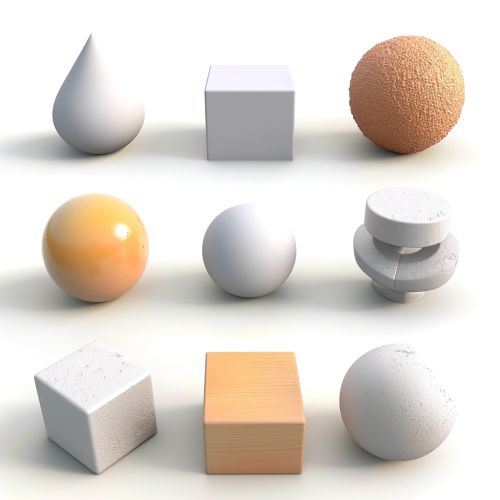Constructive Solid Geometry
Introduction
Constructive Solid Geometry (CSG) is a modeling technique used in computer graphics and CAD systems that uses Boolean operations like union, intersection and difference to combine simple shapes into more complex ones. It is a procedural modeling technique, which means that the final model is the result of a sequence of operations on simpler objects.
Basic Concepts
In CSG, the basic objects are usually primitive shapes such as spheres, cubes, cylinders, cones, and tori. These shapes are defined mathematically, which allows for precise control over their dimensions and orientation.

The operations used to combine these shapes are based on the principles of set theory. The three basic operations are:
- Union: The union of two shapes is a new shape that includes all the points that are in either of the original shapes.
- Intersection: The intersection of two shapes is a new shape that includes only the points that are in both of the original shapes.
- Difference: The difference of two shapes is a new shape that includes all the points that are in the first shape but not in the second.
These operations can be combined in any sequence to create complex shapes from simple ones. The resulting shapes are always solid and can be rendered with any standard rendering technique.
CSG Trees
A CSG model is usually represented as a binary tree, known as a CSG tree. Each node in the tree represents a CSG operation (union, intersection, or difference), and the leaves of the tree represent the primitive shapes. The root of the tree represents the final model.
The CSG tree provides a compact and intuitive representation of the model. It also allows for efficient algorithms for rendering and other operations. For example, ray tracing a CSG model can be done by recursively tracing the ray through the CSG tree.
Applications
CSG is widely used in computer graphics, CAD systems, and 3D printing. It is particularly useful for designing mechanical parts, architectural models, and other objects that are composed of simple shapes.
In computer graphics, CSG is often used in combination with other modeling techniques, such as polygonal modeling and surface modeling. This allows for a wide range of effects and a high level of detail.
In CAD systems, CSG is used for precise control over the dimensions and orientation of the parts. It also allows for easy modifications of the model, since any change in the primitive shapes or the operations can be propagated through the CSG tree to update the final model.
In 3D printing, CSG is used to design the model that will be printed. The model is usually exported as a mesh, which is then sliced into layers for printing. The precision and procedural nature of CSG make it ideal for this application.
Advantages and Disadvantages
Like any modeling technique, CSG has its advantages and disadvantages.
One of the main advantages of CSG is its precision. Since the primitive shapes are defined mathematically and the operations are based on set theory, the resulting models are exact and free of approximation errors.
Another advantage is its procedural nature. This allows for easy modifications and parametric designs. It also allows for compact representation of complex models, since the CSG tree can be stored and manipulated more efficiently than a mesh.
However, CSG also has some disadvantages. One of the main ones is its limited expressiveness. While it is possible to create a wide range of shapes with CSG, some shapes are difficult or impossible to represent with this technique. For example, organic shapes and free-form surfaces are difficult to model with CSG.
Another disadvantage is the complexity of the algorithms for rendering and other operations. While these algorithms are efficient, they are also complex and require a deep understanding of the principles of CSG and set theory.
